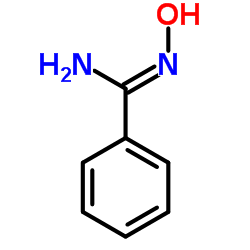Genotoxic activities of benzamidine and its N-hydroxylated metabolite benzamidoxime in Salmonella typhimurium and mammalian cells.
B Clement, P Schmezer, H Weber, J R Schlehofer, S Schmitt, B L Pool
文献索引:J. Cancer Res. Clin. Oncol. 114(4) , 363-8, (1988)
全文:HTML全文
摘要
The genotoxic potentials of benzamidine and benzamidoxime were determined to study the toxicological relevance of the metabolic N-oxygenation (N-hydroxylation) of benzamidines to benzamidoximes. Benzamidoxime induced DNA single-strand breaks (in rat hepatocytes) and DNA amplification in SV40-transformed hamster cells. In the experiments performed, benzamidine itself was only marginally positive in the hepatocyte/DNA single-strand break assay. Since these cells possess an intact metabolization apparatus, the biological activities may be attributed to toxic and genotoxic metabolites formed by biotransformation. In the Salmonella typhimurium mutagenicity test (TA 98 and TA 100) benzamidoxime alone exhibited a low mutagenicity in the TA 98 strain in the presence of rabbit liver S-9 fractions. These results permit recognition of the metabolic N-hydroxylation of benzamidines to benzamidoximes as a process to toxication. Indirect evidence for the formation of a glucuronide of benzamidoxime has been obtained from in vitro experiments, but it could not be established that this process was a decisive factor in the genotoxicity of benzamidoxime.
相关化合物
| 结构式 | 名称/CAS号 | 分子式 | 全部文献 |
|---|---|---|---|
 |
苄胺肟
CAS:613-92-3 |
C7H8N2O |
|
A novel and specific fluorescence reaction for uracil.
2010-08-03 [Anal. Chim. Acta 674(2) , 234-8, (2010)] |
|
Characteristics of the microsomal N-hydroxylation of benzami...
1987-06-01 [Xenobiotica 17(6) , 659-67, (1987)] |
|
Biotransformation of benzamidine and benzamidoxime in vivo.
1993-10-01 [Arch. Pharm. (Weinheim) 326(10) , 807-12, (1993)] |
|
[Biotransformation of benzamidine and benzamidoxime by micro...
1989-07-01 [Arch. Pharm. (Weinheim) 322(7) , 431-5, (1989)] |
|
Metabolism of benzamidoxime (N-hydroxyamidine) in human hepa...
2005-01-01 [Xenobiotica 35(1) , 17-25, (2005)] |